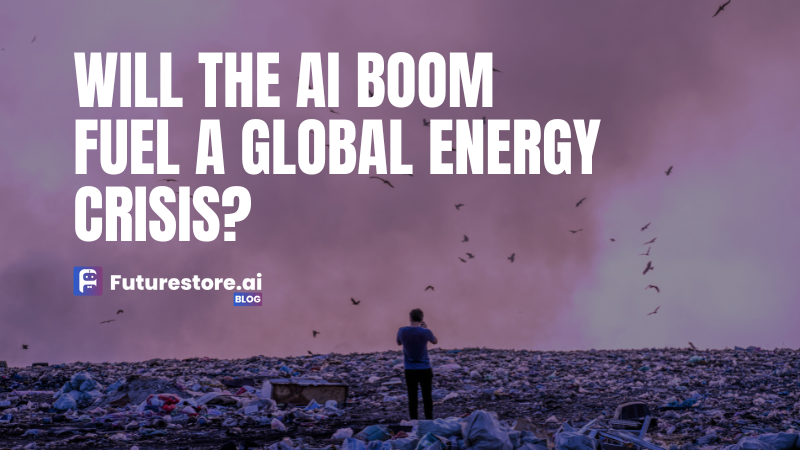Artificial Intelligence is changing the world—but could it also be draining it?
The rise of AI has brought unprecedented advancements in automation, healthcare, creativity, and productivity. But behind the scenes of every ChatGPT conversation, Midjourney image, or YouTube recommendation is a hidden cost: massive energy consumption.
As the AI boom continues, experts are starting to ask a serious question:
Will our growing reliance on AI trigger a global energy crisis?
Let’s break it down.
The Power-Hungry Side of AI
Training a single large language model like GPT-4 can consume energy equivalent to hundreds of transatlantic flights. And that’s just training. Running these models every time you generate text, translate languages, or create images requires countless data center servers to process requests in real-time.
What uses all this energy?
- Training: Billions of parameters adjusted over weeks or months on thousands of GPUs
- Inference (usage): Every AI query needs server power and cooling
- Data centers: Always-on facilities that house these systems
According to some estimates, AI could account for up to 3.5% of global electricity demand by 2030—and that number could grow fast.
Cloud Servers vs. The Climate
AI is hosted in data centers—facilities that already consume around 1-2% of the world’s electricity today. Many of these are powered by fossil fuels.
Big Tech companies are scrambling to go green, investing in solar, wind, and carbon offsets. But here’s the catch: as AI demand explodes, even the fastest-growing green energy solutions might not keep up.
Will AI Push the Grid to Its Limits?
With AI being integrated into nearly every sector—marketing, logistics, healthcare, education—the number of daily queries is skyrocketing.
Here’s what we’re up against:
- More GPUs = more electricity
- Higher cooling needs in data centers
- Increased strain on outdated power grids
- Potential rise in emissions if fossil fuels are used to meet demand
If unchecked, the energy demand could put intense pressure on already fragile grids, especially in developing nations.
Can We Build Smarter, Greener AI?
The future isn’t doomed—but it demands action.
Here’s what could help prevent an energy crisis:
- 🌱 Green Data Centers: More providers switching to renewable energy and better cooling methods
- 🔧 Efficient AI Models: Developing smaller, faster models that need less power
- 💡 Hardware Innovation: Energy-efficient chips like TPUs and neuromorphic processors
- 🌍 Policy and Regulation: Governments may step in with efficiency standards and carbon taxes
Big AI players like Google, Microsoft, and OpenAI are already exploring these options, but wider adoption is needed—fast.
So, Will AI Cause an Energy Crisis?
Not if we act responsibly.
AI doesn’t have to be a climate villain. But it will be if we continue scaling without sustainability in mind. The AI community, infrastructure providers, and governments must come together to ensure that innovation doesn’t come at the cost of our planet.
As users, we can also be part of the solution—by supporting responsible AI development, asking tough questions, and being aware of the hidden cost of convenience.
Final Thoughts
The AI boom is here to stay—but whether it powers progress or powers down the grid is up to us.
💬 What’s your take? Should AI companies be forced to go green? Are you concerned about AI’s environmental impact? Drop your thoughts in the comments!

